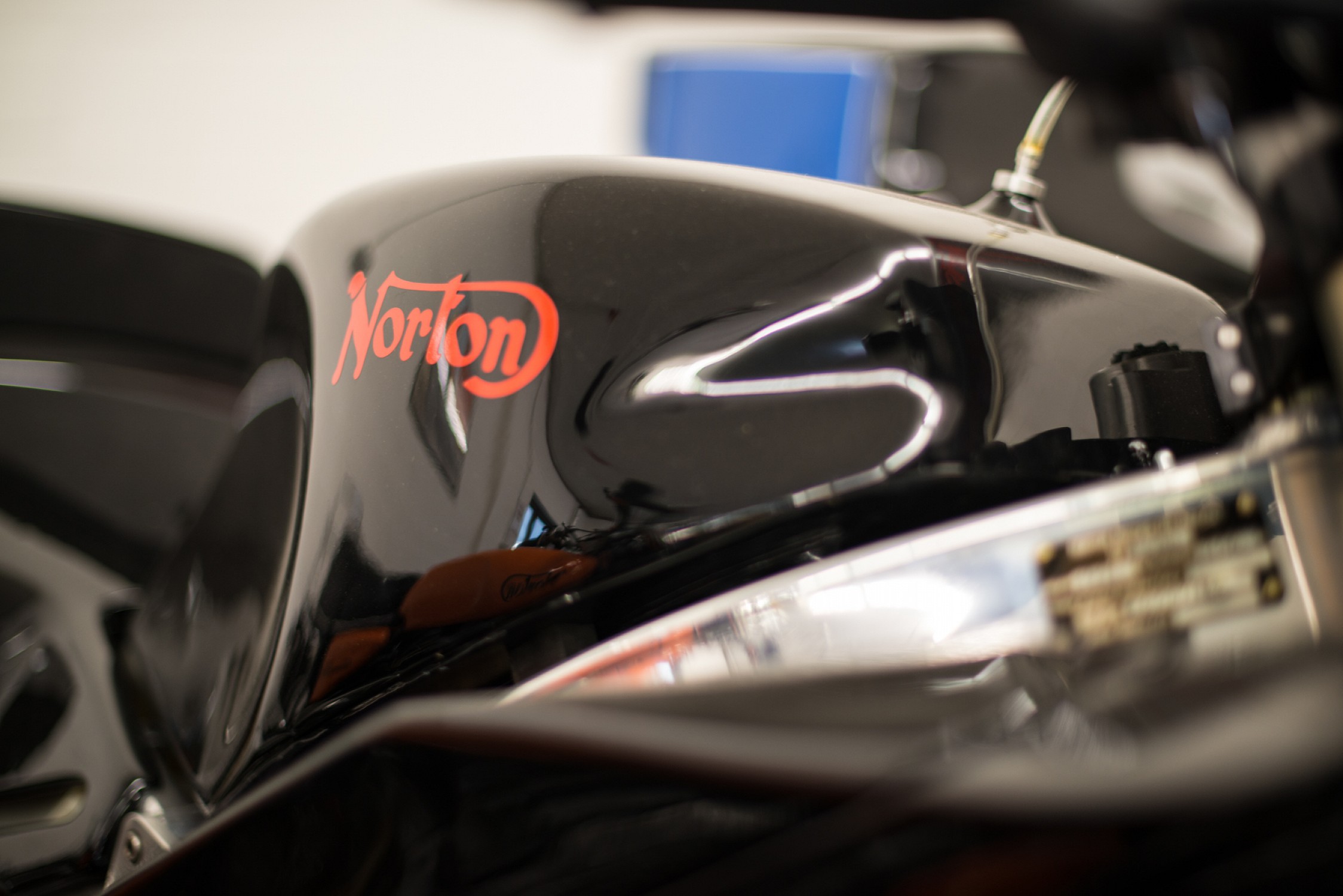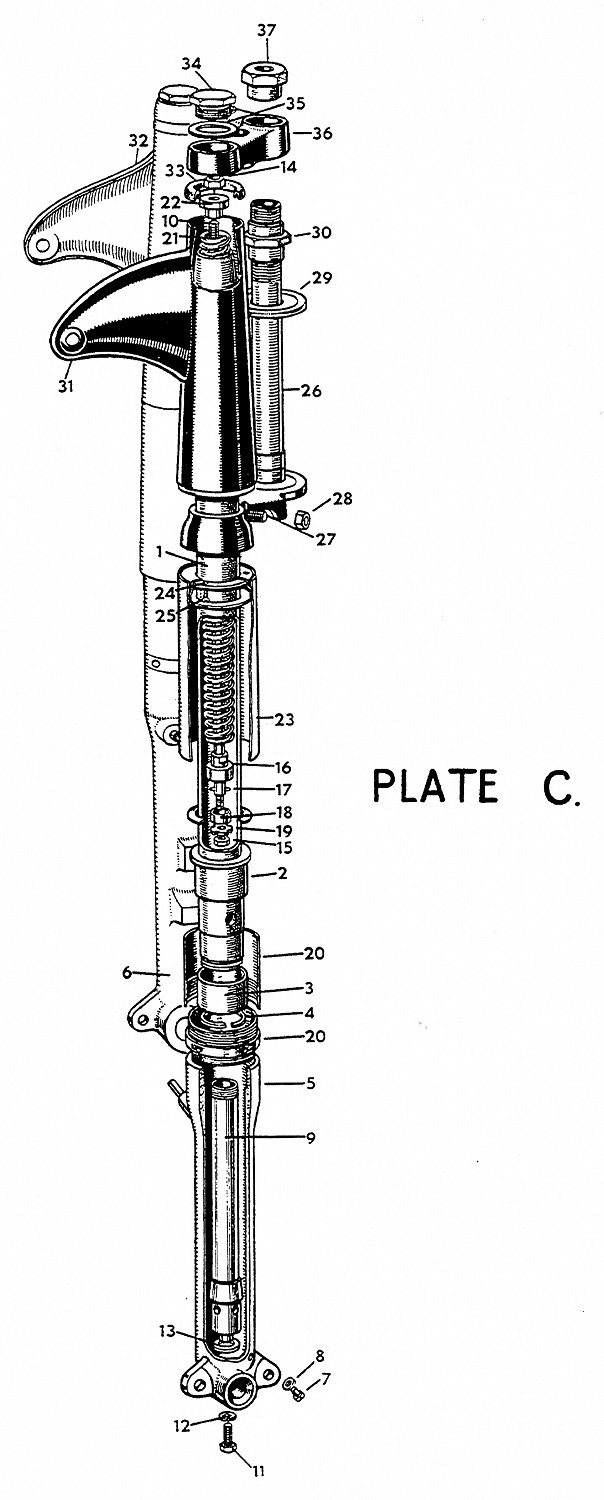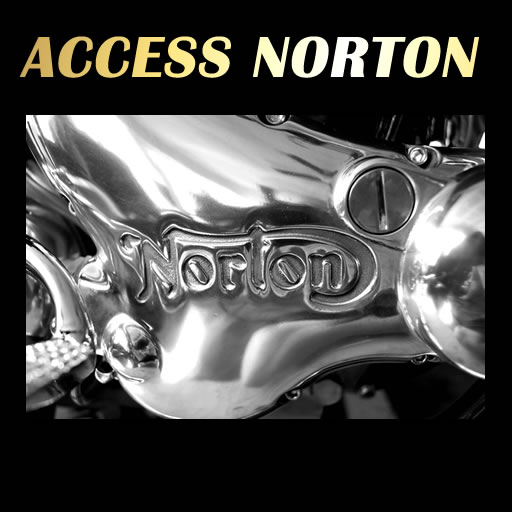You are using an out of date browser. It may not display this or other websites correctly.
You should upgrade or use an alternative browser.
You should upgrade or use an alternative browser.
Fork Damper Rod Threads
- Thread starter johnod
- Start date
- Joined
- Nov 20, 2004
- Messages
- 20,370
"Featherbed" should be 3/8 x 26 but apparently special (55 degree) Whitworth, not (60 degree) 26 tpi Cycle thread.
 "FORK DAMPER ROD (WHIT) (NM15801)(F11M/1049)"
"FORK DAMPER ROD (WHIT) (NM15801)(F11M/1049)"
The upper nut '14' is 3/8 x 26.



Motorcycle parts and spares for Norton motorbikes - Genuine Andover Norton Spare Parts - Andover Norton Motorcycles Parts - Original Andover Norton Parts
Motorcycle parts and spares for Andover Norton motorbikes: Andover Norton manufactures and supplies all Genuine Factory Spare Parts for Norton motorcycles built before 2002.
andover-norton.co.uk
The upper nut '14' is 3/8 x 26.

Andover Norton Parts Drawings - Genuine Andover Norton Factory Parts - Commando Parts
Andover Norton Parts are the only Norton spare parts in the market manufactured to original drawings, within the factory-approved tolerances, from the correct materials, and with the correct finish.
andover-norton.co.uk

Motorcycle parts and spares for Norton motorbikes - Genuine Andover Norton Spare Parts - Andover Norton Motorcycles Parts - Original Andover Norton Parts
Motorcycle parts and spares for Andover Norton motorbikes: Andover Norton manufactures and supplies all Genuine Factory Spare Parts for Norton motorcycles built before 2002.
andover-norton.co.uk
t ingermanson
VIP MEMBER
- Joined
- Oct 17, 2018
- Messages
- 576
BSC. "C" is for "cycle thread", rather than fine, whitworth, pipe, etc.
To my knowledge, cycle thread is always 26 tpi.
To my knowledge, cycle thread is always 26 tpi.
- Joined
- Nov 20, 2004
- Messages
- 20,370
I measured the dia. and it's 3/8, and I measured the thread with a thread gauge, and that read 26G.
I have no idea what the G is about, so that must be it i guess.
Thanks
Would that be what's called a BSW thread?
It's special Whitworth or 'Whitform'.
According to AN, certain Norton threads are Whitform and not CEI/BSC. The damper rod according to AN is "WHIT" so not 26 TPI CEI/BSC as one would expect.
A 3/8" x 26 Whitform die isn't a common size (if it ever was?) and the only place I can find taps and dies is Tracy Tools...

3/8" X 26 TPI W/FORM - Taps & Dies, Reamers, Milling Cutters, Tracy Tools
...although 3/8" x 26 BSB (British Standard Brass) should be identical (or near-identical) as it's also a Whitworth thread.

2" X 26 TPI W/FORM - Taps & Dies, Reamers, Milling Cutters, Tracy Tools
- Joined
- Nov 20, 2004
- Messages
- 20,370
I have no idea what the G is about
The 'G' appears to refer to parallel pipe thread:
ISO 228 - Pipe Threads where Pressure Tight Joints are not made on the Threads
Requirements for thread form, dimensions, tolerances and designation for fastening pipe threads, thread sizes.
- Joined
- Dec 9, 2014
- Messages
- 42
Why in god's green earth would this thread be anything other than BSC 3/8x26 as described by everyone other than AN. The only place I know of where BSB threads are found on a Norton is Smiths instrument cables. As we all know,"Whitworth" is often used as a catchall for any British threads and I suspect even AN are guilty here.
- Joined
- Nov 20, 2004
- Messages
- 20,370
To my knowledge, cycle thread is always 26 tpi.
Not always. Although various CEI pitches were not adopted into BSC (BS811) 20 TPI apparently was for a while but there's 40 TPI (1/8") and 32 TPI (5/32" & 3/16") also 24 and 30 TPI for "special applications".
- Joined
- Nov 20, 2004
- Messages
- 20,370
As we all know,"Whitworth" is often used as a catchall for any British threads and I suspect even AN are guilty here.
Apparently not.

Where do you guys find your bolts?
I have found Custom Fasters in Wales (UK) to be excellent for all types of fasteners. I would thoroughly recommend them: http://www.custom-fasteners.co.uk
- Joined
- Nov 20, 2004
- Messages
- 20,370
I cannot find any other supplier who describes this as anything other than CEI/BSC, eg RGM.
That's understandable as 3/8" x 26 would usually be BSC and I'd have said the same until Madnorton (of AN) said otherwise and as AN has factory drawings and other suppliers probably do not then I can't see them referring to a particular item as 'Whit' or 'Whitform' if it isn't.
This was new to me. Is there a particular reason for not using BSC threads in this application?
Does anyone know of a source for damper rods (06.7657) made of stainless steel? I would like to put an end to corrosion, which damages the damper tube caps as the rods move up and down.
-Knut
Does anyone know of a source for damper rods (06.7657) made of stainless steel? I would like to put an end to corrosion, which damages the damper tube caps as the rods move up and down.
-Knut
Last edited:
- Joined
- Jan 12, 2019
- Messages
- 200
Looking at https://andover-norton.co.uk/en/shop-drawing/515/roadholder-front-forks
The nut that goes on the end of the dampener rod under the big top nut is 00.0003 which is a plain old 3/8" x 26 TPI nut and is used on other places on a slimline. If the thread on the dampener rod was that different wouldn't Norton have spec'd a special nut?
The nut that goes on the end of the dampener rod under the big top nut is 00.0003 which is a plain old 3/8" x 26 TPI nut and is used on other places on a slimline. If the thread on the dampener rod was that different wouldn't Norton have spec'd a special nut?
- Joined
- Nov 20, 2004
- Messages
- 20,370
Is that plain old 3/8" x 26 BSC or plain old 3/8" x 26 Whit Form as it doesn't say it is BSC, although there does seem to be a certain lack of consistency where one part is marked Whit or Whit Form and the other part is not.Looking at https://andover-norton.co.uk/en/shop-drawing/515/roadholder-front-forks
The nut that goes on the end of the dampener rod under the big top nut is 00.0003 which is a plain old 3/8" x 26 TPI nut and is used on other places on a slimline. If the thread on the dampener rod was that different wouldn't Norton have spec'd a special nut?
ES234
VIP MEMBER
- Joined
- Apr 5, 2014
- Messages
- 68
G is possibly for "gauge", ("Gage possible" alternative US spelling). My Whitworth set all has "G" after each tpi, while my UNF set doesn't.I measured the dia. and it's 3/8, and I measured the thread with a thread gauge, and that read 26G.
I have no idea what the G is about, so that must be it i guess.
Thanks
Would that be what's called a BSW thread?
It will be extremely difficult to distinguish 55 degrees and 60 degrees using a handheld gauge, as long as the pitch is the same. You will have to use a microscope to spot the difference.
The cited "Whitform" or "W/form" is informal language. You will not find this in a standard. Taps and dies sold by Tracey Tools go far beyond the standard, and are for special purposes. It's unlikely Norton/AMC used these.
Whitworth treads (as per standard BS 84) knows two entries for 3/8 bolts and nut only, it's the 3/8"x16 tpi BSW coarse, and the 3/8"x20 tpi BSW fine = BSF.
-Knut
The cited "Whitform" or "W/form" is informal language. You will not find this in a standard. Taps and dies sold by Tracey Tools go far beyond the standard, and are for special purposes. It's unlikely Norton/AMC used these.
Whitworth treads (as per standard BS 84) knows two entries for 3/8 bolts and nut only, it's the 3/8"x16 tpi BSW coarse, and the 3/8"x20 tpi BSW fine = BSF.
-Knut
- Joined
- Nov 20, 2004
- Messages
- 20,370
The 'G' on Whitworth pitch gauges as previously mentioned appears to refer to BSPP "external = G" pipe thread.G is possibly for "gauge", ("Gage possible" alternative US spelling). My Whitworth set all has "G" after each tpi, while my UNF set doesn't.
https://www.gewinde-normen.de/en/whitworth-pipe-thread.html
The cited "Whitform" or "W/form" is informal language. You will not find this in a standard. Taps and dies sold by Tracey Tools go far beyond the standard, and are for special purposes. It's unlikely Norton/AMC used these.
Well, Ashley "Madnorton" of Andover Norton has said otherwise...
A few at most are 'Whit Form' we get most queries about these. You will not get them from a local fastener specialist. Why Norton used these is anyones guess.
Yes, not all 20 & 26 tpi are Cycle, many assumed they were and bought Cycle threaded parts from other sources, only to query why they didn't quite seem right.
For what reason Norton decided to use 26 tpi Cei and Whit Form is still a guess, it seems to go against the BSA standards book.
Whit form is used to describe a whitworth thread form used outside the normal table range of whitworth threads, usually with a different TPI. Or this may help others - a Whitworth thread you will find in a whitworth thread table, anything described as Whit Form you will not.
I have even had battles with fastener suppliers saying it can't be, only for their old and bold die makers to confirm it.
...seems no reason to say that if there's no truth in it, also various pre-Unified AN items are marked 20 TPI Whit form. As there appears to have been no 20 TPI BSC series by this time then what thread form is it, if not Whit form?:

Motorcycle parts and spares for Norton motorbikes - Genuine Andover Norton Spare Parts - Andover Norton Motorcycles Parts - Original Andover Norton Parts
Motorcycle parts and spares for Andover Norton motorbikes: Andover Norton manufactures and supplies all Genuine Factory Spare Parts for Norton motorcycles built before 2002.
andover-norton.co.uk

Motorcycle parts and spares for Norton motorbikes - Genuine Andover Norton Spare Parts - Andover Norton Motorcycles Parts - Original Andover Norton Parts
Motorcycle parts and spares for Andover Norton motorbikes: Andover Norton manufactures and supplies all Genuine Factory Spare Parts for Norton motorcycles built before 2002.
andover-norton.co.uk

Motorcycle parts and spares for Norton motorbikes - Genuine Andover Norton Spare Parts - Andover Norton Motorcycles Parts - Original Andover Norton Parts
Motorcycle parts and spares for Andover Norton motorbikes: Andover Norton manufactures and supplies all Genuine Factory Spare Parts for Norton motorcycles built before 2002.
andover-norton.co.uk

Motorcycle parts and spares for Norton motorbikes - Genuine Andover Norton Spare Parts - Andover Norton Motorcycles Parts - Original Andover Norton Parts
Motorcycle parts and spares for Andover Norton motorbikes: Andover Norton manufactures and supplies all Genuine Factory Spare Parts for Norton motorcycles built before 2002.
andover-norton.co.uk
I will PM Madnorton and ask if he can clear this up.
Similar threads
- Replies
- 7
- Views
- 495
